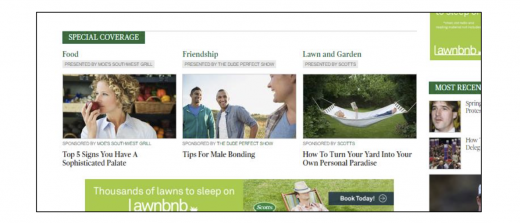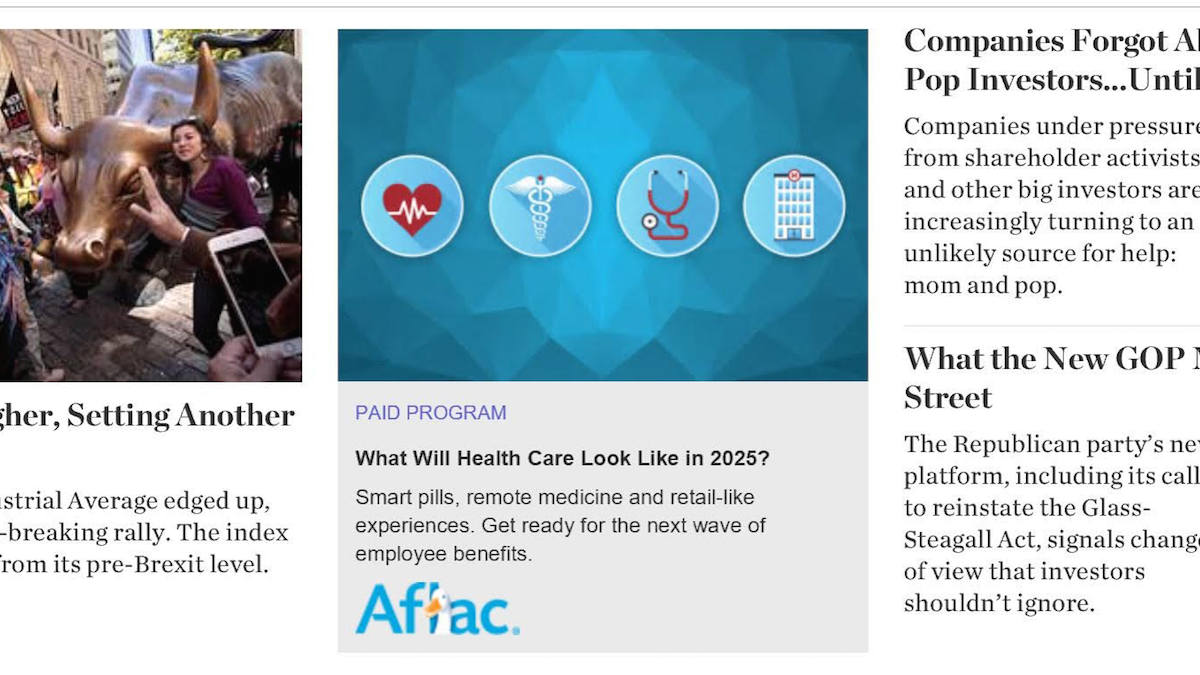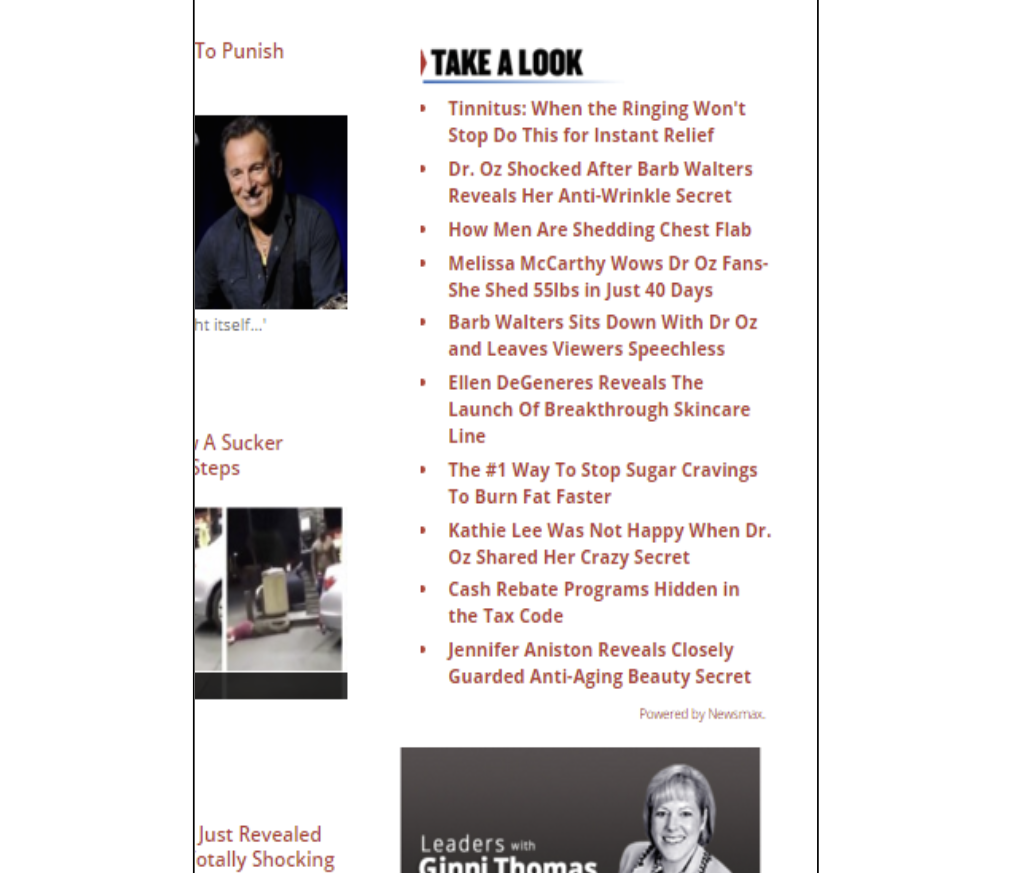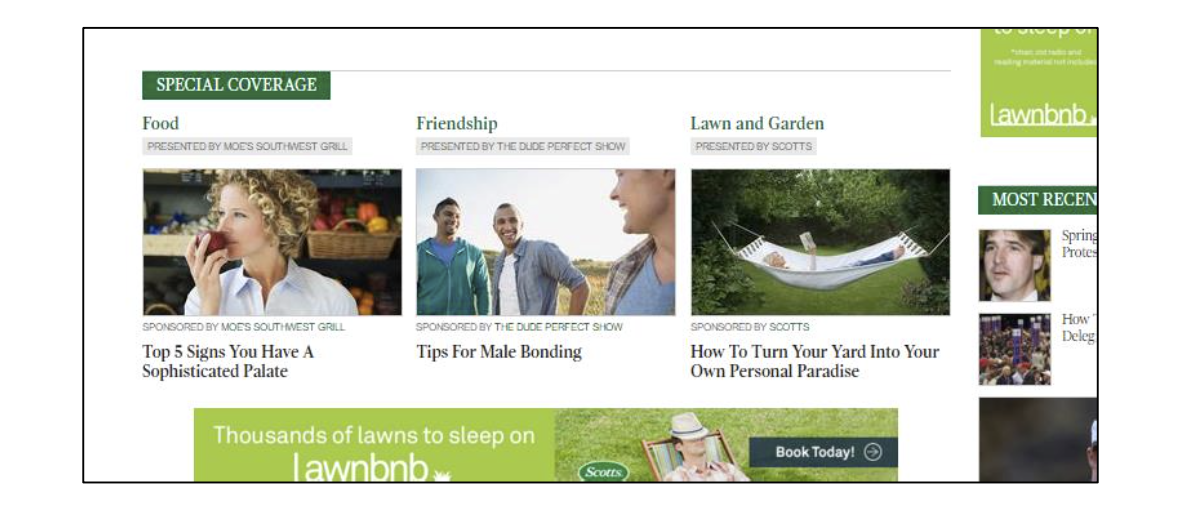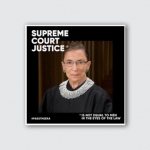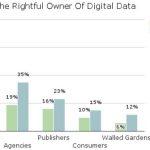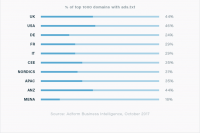Report: Nearly three-quarters of native ads get failing scores
New study by the Online Trust Alliance finds that most native ads do not adequately show they are ads.
Native ads can be very effective in attracting reader attention because their content relates to the surrounding editorial content, and their visual style helps them blend in.
But a new study, out today, finds that most of them blend in too much, possibly tricking readers into thinking they’re not ads.
The Online Trust Alliance (OTA)’s Native Advertising Assessment looked at the 100 top news websites by unique monthly visitors, of which 69 percent had one or more native ads on their home pages. The sites included such major publishers as ABC News, About.com, Business Insider, Fortune, Discovery, The Los Angeles Times, Mic, The New York Times and PBS. OTA said that, to its knowledge, this is the first study of its kind.
Of those 69 sites, only nine percent received top trust scores for clearly distinguishing native ads as ads. Twenty percent were deemed as “in need of improvement,” and a whopping 71 percent received failing grades.
A Wall Street Journal ad from last month (See top of this page) is cited in the report as a high-scoring one that adequately distinguished the native ad.
The report said it showed:
“… a highly visible, good contrast disclosure using recommended terminology; clear delineation from surrounding editorial; a very clear, color brand logo indicating the sponsor (in this case, Aflac). Noteworthy is that the WSJ included a second in-context disclosure [on the next page after clicking on the ad].”
And here are two examples of native ads with failing grades:
In the example above — one of nine that received a score of zero — the “Powered by Newsmax” label is small and hard to read, does not make clear these are ads, does not indicate if all the headlines are from Newsmax, and these native ads are not visually separated from editorial.
And in the ad below, the visual style exactly matches the style of editorial content, the label “Special Coverage” specifically suggests this is editorial, and the “sponsored by” labels are small and in hard-to-read light gray.
Two OTA staff members scored each ad, and a third person was brought in if there was a disagreement. Scoring was based on each ad’s disclosure (e.g., the use of such words as “sponsored content”), discoverability (how easily the disclosure text could be read because of color, text size, contrast or other factors) and delineation (styles to distinguish the native ad unit with shading, borders and/or brand logos).
While the Federal Trade Commission (FTC) has some guidelines on native ads, OTA Executive Director Craig Spiezle told me, there are few hard and fast rules. He also pointed out that the FTC doesn’t audit ads or provide a method for scoring.
“We’re setting a standard,” he said.
With no standards currently, the study found that the 69 sites with native ads used 43 different terms to label them as ads — but OTA found that only 13 of those terms were acceptable as being clearly understandable by a reader.
In fact, sometimes the label and visual style differed on the same site at different times, which Spiezle attributed to A/B testing, a lack of site standards or native ads issued by third parties, such as Outbrain or Taboola. And sometimes the native ads on the same site appeared differently on different kinds of screens.
Except for the screen grabs in the report, OTA decided not to call out any publishers in particular in this report. But an update of the report will be issued in 90 days, at which time names will be named. The organization expects that this annual audit will become part of its annual trust audit report.
To help correct this state of affairs, the report’s recommendations include:
- Use OTA-recommended disclosure terminology (e.g., “sponsored ad”).
- Make sure third parties that serve up native ads (such as Outbrain or Taboola) comply with recommendations.
- Be consistent in having clear and conspicuous disclosures, and use shading, horizontal rules or other visual techniques to separate native ads from content.
Spiezle said that standards for native ads should have an industry-wide “voluntary code of conduct” developed with input from the FTC, publishers and ad providers. But it’s not clear yet why publishers would employ such a voluntary code, what would happen if they didn’t and how readers could know which ones complied.
Marketing Land – Internet Marketing News, Strategies & Tips
(33)

